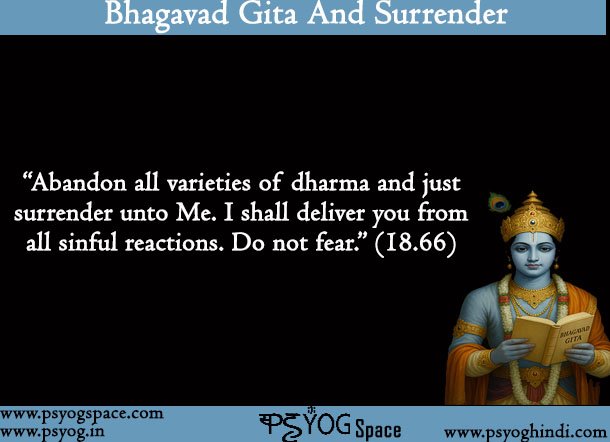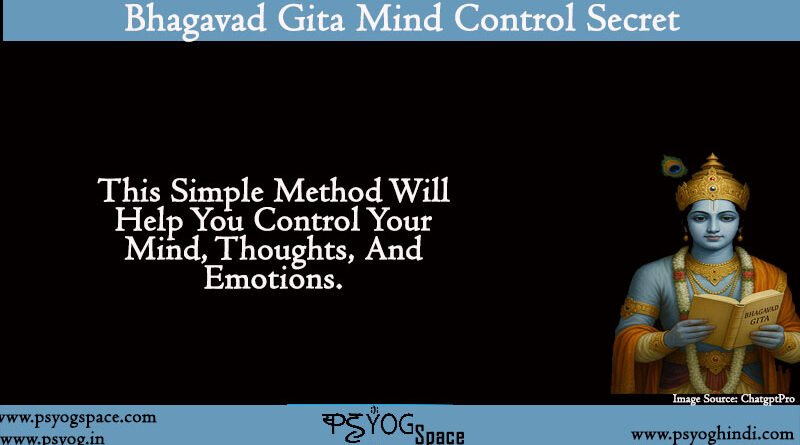How To Control Mind As Per Bhagavad Gita
When it comes to understanding how to control mind as per Bhagavad Gita, the answer isn’t about fighting thoughts or suppressing desires. Instead, the Gita points us toward something deeper and far more freeing — surrender. True control doesn’t mean putting the mind in a cage. It means letting go of the false sense of ownership over the mind. As Lord Krishna says, “Abandon all varieties of dharma and just surrender unto Me. I shall deliver you from all sinful reactions. Do not fear.” (18.66) This surrender is not a weakness; it is a deep recognition that control begins with releasing the illusion of control.
Limited "I" Mind
To fully grasp how to control mind as per Bhagavad Gita, we must first understand the nature of our mind. The mind is not a blank slate. It operates from past memory, impressions, and previously absorbed information. All thinking is shaped by what we already know. Without memory, there is no thinking. Try to imagine something you’ve never seen, heard, or felt before — it’s not possible. This simple truth tells us that the mind’s activity is bound by the limited “I”, the ego-identity formed by experiences.
And this “I” believes it is real. But it’s only a collection of impressions. This mental identity is restless, always seeking, comparing, judging. When you think about how to control mind as per Bhagavad Gita, this is where the challenge begins. The Gita recognizes the difficulty: “The mind is restless, turbulent, obstinate and very strong, O Krishna.” (6.34)
How to Control Mind as per Bhagavad Gita and False Identity
An important insight into how to control mind as per Bhagavad Gita lies in the nature of identity itself. We create our identity from information — our memories, our self-talk, and our mental stories. We say, “I am this,” “I want that,” “I need this to be happy.” But who are we without these thoughts?
The Gita teaches us that the true Self (Atma) is not these thoughts. We are not the roles we play or the stories we tell ourselves. But once our identity is built around these thoughts, we naturally become attached to the thinking process. It feels impossible to stop thinking because our entire sense of “me” depends on it.
This is why many struggle with how to control mind as per Bhagavad Gita — because we are trying to control the very thing we believe we are. But if our identity is tangled with thoughts, then the more we try to stop thinking, the more we panic, as if we’re losing ourselves. The solution, as Lord Krishna points out, is detachment, which naturally comes through surrender.

Once Our Identity Becomes Our Thinking Mind, Then the Only Solution is Surrender
Now, here’s the turning point. Once we realize that our identity is made of thoughts, and the mind cannot stop thinking because that threatens the ego, then we begin to see the deeper meaning of how to control mind as per Bhagavad Gita. We’re not supposed to overpower the mind. We are supposed to step back from it.
Surrender, in the Gita, is not about passivity. It’s about returning to our true Self, the consciousness behind the thoughts. When you surrender, you no longer act from the false “I,” which is bound by memory. You release the struggle. And in this release, the mind begins to quiet on its own.
In deep surrender, we stop feeding thoughts with our attention. The limited identity starts to dissolve. What remains is a stillness, a state where we become like a calm ocean — no matter how many rivers of thoughts flow in. It’s like a meditative state or deep sleep where thoughts exist but no longer disturb. This is not trance or hypnosis. It’s full awareness without being entangled.
This, ultimately, is the Gita’s practical insight into how to control mind as per Bhagavad Gita: through surrender, we transcend the mind. “A person is said to be elevated when he does not get disturbed by the flow of desires… but remains still like the ocean.” (2.70)
Conclusion
So, how to control mind as per Bhagavad Gita? First, by understanding that control doesn’t mean suppressing thoughts. The mind is limited — built from memory, shaped by impressions. This “I” we try to defend is only a collection of mental content. And when that identity becomes our reality, thinking becomes non-stop, because that’s what keeps the “I” alive.
The Bhagavad Gita gently guides us toward surrender — not as defeat, but as awakening. We drop the illusion that we are the doers, the thinkers, the mind. We let go of control, and in that letting go, we regain true freedom. The false identity melts into the silence of the true Self.
This is the essence of how to control mind as per Bhagavad Gita. Not through inner war, but by stepping out of the battlefield entirely. When we surrender, the restless mind loses its grip, and we discover something timeless, still, and whole within ourselves.
In surrender, we don’t lose who we are — we finally meet who we really are.
FAQs
The Bhagavad Gita take on the time is something we all experience. It says that it jumps around and doesn’t settle easily. But instead of forcing it, we’re asked to step back, stay steady, and let go. Through quiet effort and surrender, the mind slowly softens. It's not about control in the usual sense—it's more about not getting dragged around by every thought.

